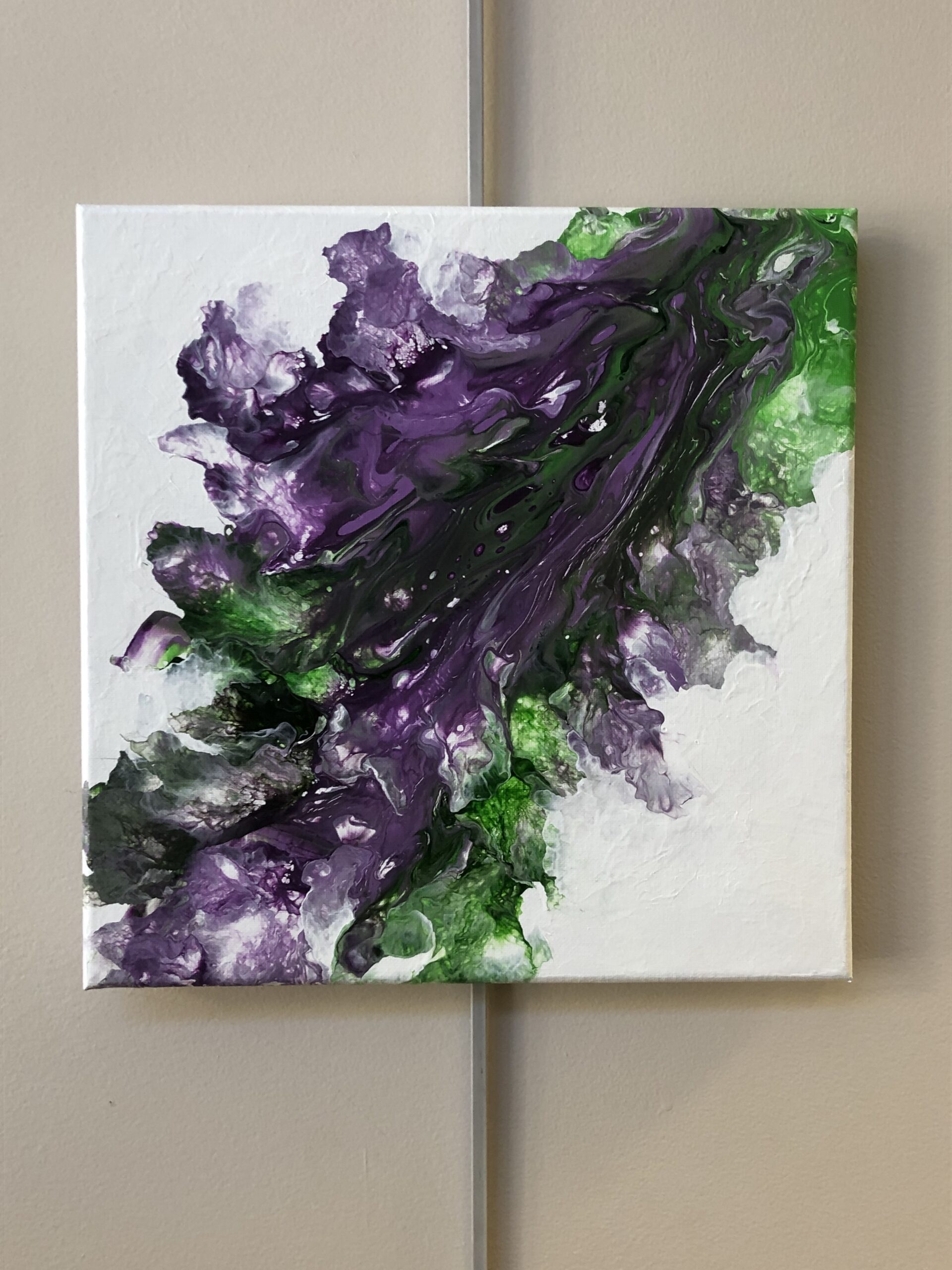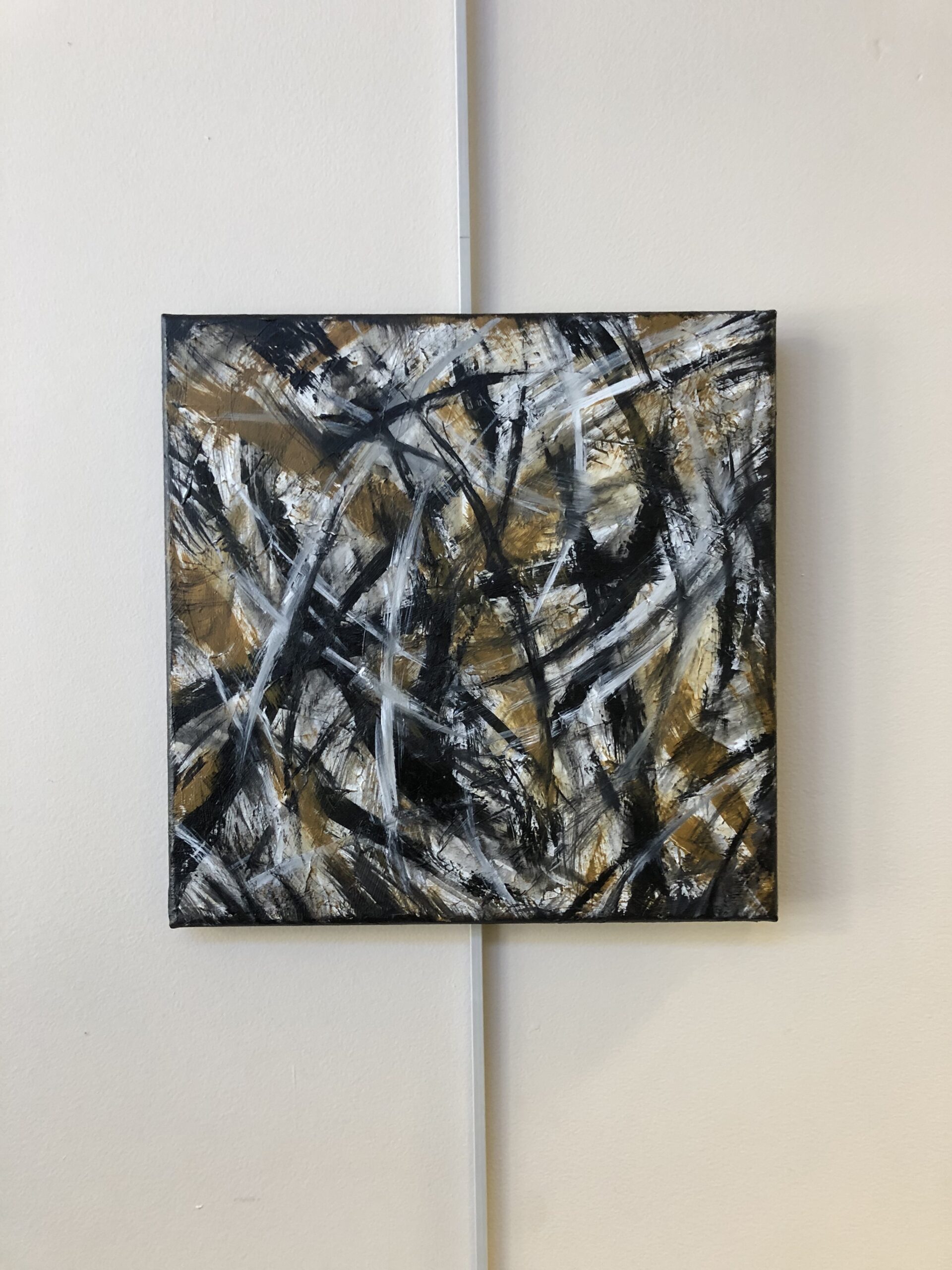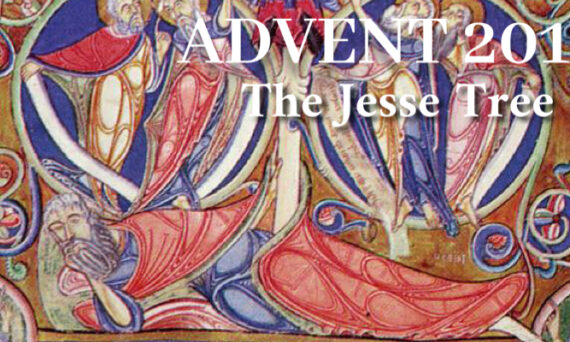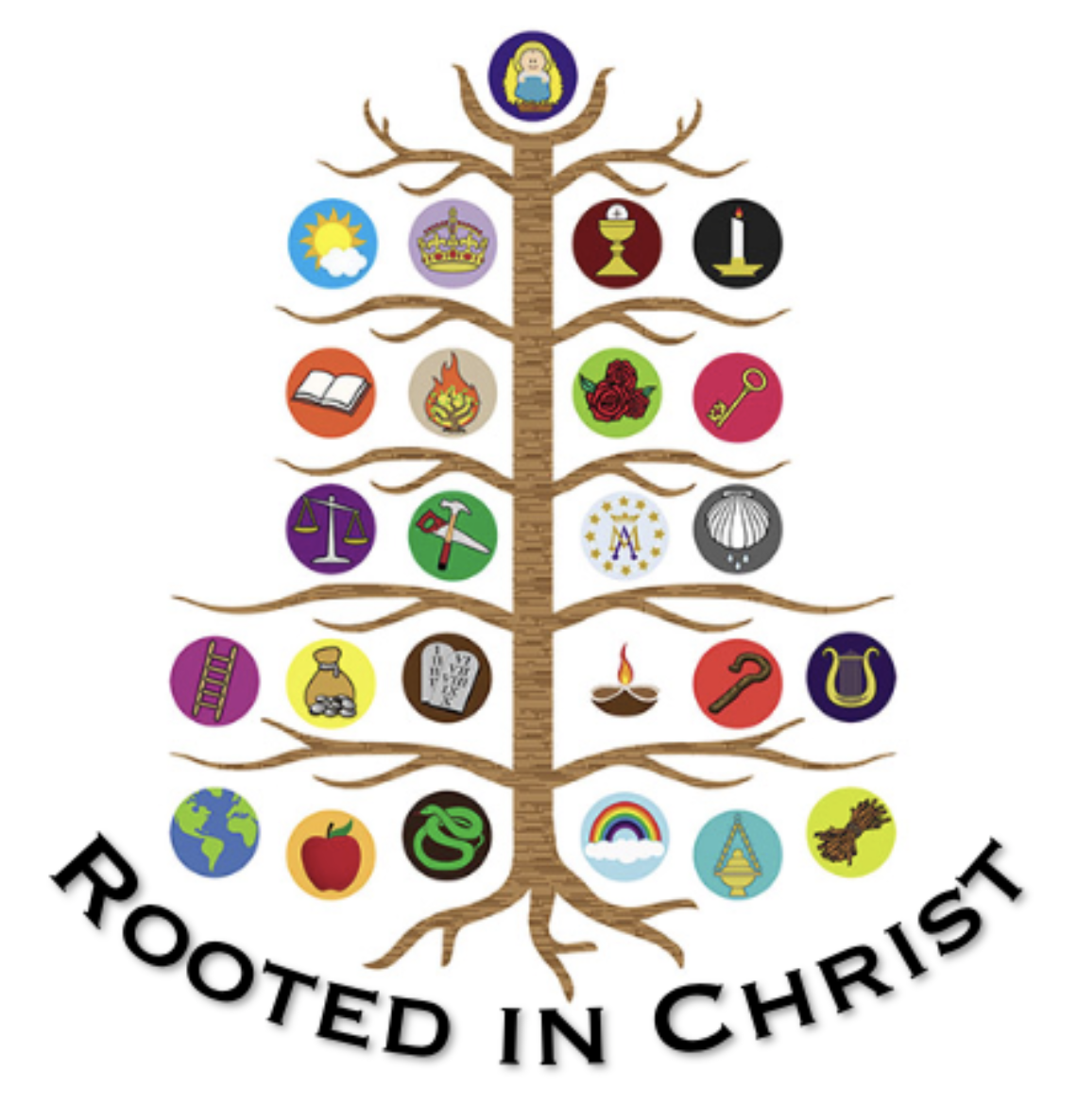The Jesse Tree: Grapes
The second Sunday of Advent brought our attention to the Promised Land which serves as both a promised home but also a metaphor for the church of the eternal home of God’s people. I write more about this in an earlier post entitled, Could We But Stand Where Moses Stood. Here, GPC artist, Adah Freeman has taken as her inspiration the image of the cluster of grapes brought back from the Valley of Eshcol in Numbers 13. As we move through Advent, we are to consider the longing for the place and reception of home, of abiding, of place, and most importantly, the abiding presence of God.
Take a moment and see what your imagination reads of the painting. How might you bridge from Numbers 13, grapes, the promised land to the coming of the Christ Child? You may read my take in the poem below.

Grapes
When we returned from the land of flowing
Milk and honey — full and green and growing,
We carried the abundance, the grapes bursting
With the fruit-full promise: no more thirsting.
But then doubt set in, underneath a mumbling
That bubbled up to a fount of grumbling
The people, giants; their cities tow’ring
And a land full of enemies devouring.
Have we come this far only to die?
To be squashed? Skins left out under the sky?
How will the death of a generation
Bear the fruit: a promised, holy nation?
What pressing and crushing will remove our sin?
What life trod and poured, that we enter in?
© Randall Edwards 2019. This sonnet is for Christ’s church. If it is helpful, please feel free to copy or reprint in church bulletins, read aloud, or repost. I only ask that an attribution be cited to myself (Randall Edwards) and this blog (backwardmutters.com). Thank you. artwork: © Adah Freeman 2019, “Grapes” acrylic on canvas.





